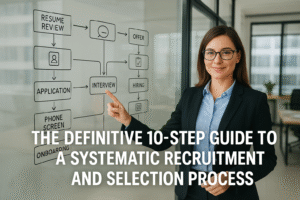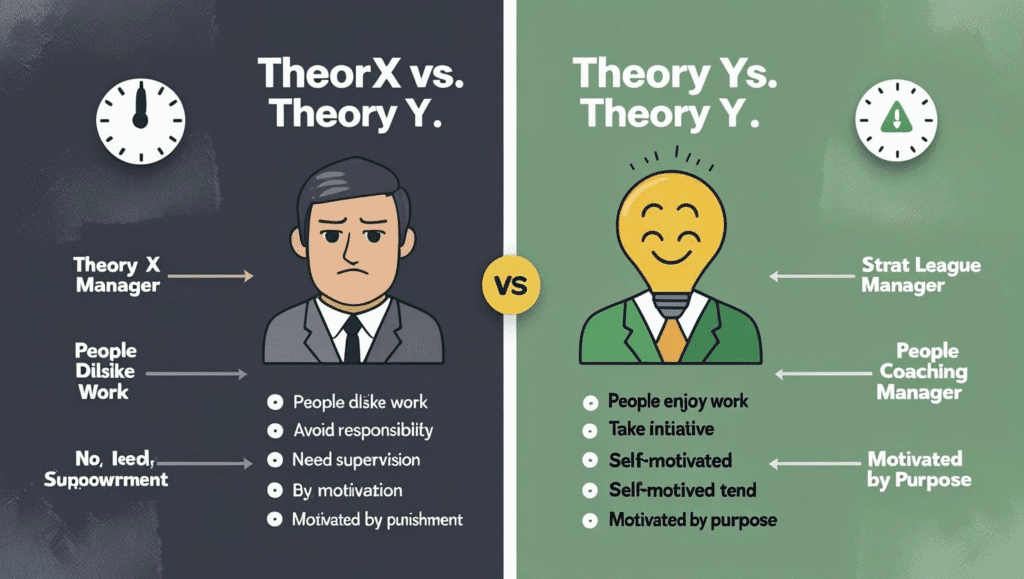The Definitive 10-Step Guide to a Systematic Recruitment and Selection Process
Hiring is one of the most critical functions of any business, yet many approach it reactively, leading to costly mistakes, high turnover, and mismatched talent. A systematic approach transforms hiring from a game of chance into a strategic process. It ensures fairness, improves the quality of hires, and aligns recruitment with your company’s long-term objectives. This guide provides a comprehensive, step-by-step blueprint for building a robust and effective recruitment and selection system.
-
Step 1: Workforce Planning and Need Identification
Before you even think about placing a job ad, the process begins with strategy. This foundational step involves analyzing the organization’s current workforce and forecasting future needs. Don’t just ask, “Who do we need to replace?” Instead, ask, “What skills will our business need in one, three, or five years?” This is about identifying skill gaps, planning for growth, and ensuring every new hire is a strategic investment in the company’s future.
-
Step 2: Thorough Job Analysis
Once a need is confirmed, you must conduct a detailed analysis of the job itself. This involves gathering information about the core duties, tasks, responsibilities, and required outcomes of the role. Methods include interviewing high-performing employees in similar roles, observing the work being done, and using structured questionnaires. The goal is to develop a deep understanding of what success in this position truly looks like.
-
Step 3: Crafting the Job Description & Person Specification
With the analysis complete, you can create two crucial documents:
- Job Description: This is the external-facing document outlining the “what” of the job. It includes the job title, reporting structure, key responsibilities, location, and salary range. It should be clear, concise, and compelling to attract the right talent.
- Person Specification: This is the internal benchmark detailing the “who.” It lists the essential and desirable skills, qualifications, experience, and personal attributes needed to succeed. This document is the key to objective screening and evaluation throughout the process.
-
Step 4: Sourcing and Attracting Candidates
This is the “recruitment” phase, where you build a pool of qualified applicants. A multi-channel sourcing strategy is often most effective:
- Internal Sourcing: Promoting from within, internal transfers, and leveraging employee referral programs. This is often cost-effective and boosts morale.
- External Sourcing: Using online job boards (like LinkedIn, Indeed), the company’s career page, professional networking sites, recruitment agencies, university career fairs, and targeted social media campaigns.
-
Step 5: Application Screening and Shortlisting
Here, the “selection” process begins. The goal is to efficiently filter the entire applicant pool down to a manageable shortlist of the most promising candidates. This is done by comparing each application (resume, cover letter) against the criteria defined in the Person Specification. Many companies use an Applicant Tracking System (ATS) to help manage and screen large volumes of applications for keywords and qualifications.
Pro Tip: The Power of Objectivity
Create a simple scoring matrix based on your Person Specification. Score each application against essential criteria (e.g., 5+ years of Java experience, Bachelor’s degree in CS). This data-driven approach helps remove unconscious bias and ensures fairness.
-
Step 6: Conducting Effective Interviews
Interviews are the core of the selection process. A structured approach is critical for comparing candidates accurately.
- Initial Screening: A brief phone or video call to verify basic qualifications and interest.
- Structured Interviews: All candidates are asked the same set of pre-determined, job-related questions. This ensures consistency and fairness.
- Behavioral Interviews: These use questions like, “Tell me about a time when you…” to assess past performance as an indicator of future success. The STAR method (Situation, Task, Action, Result) is an excellent framework for answering.
- Situational/Case Interviews: Candidates are given a hypothetical work-related problem and asked how they would handle it, assessing their problem-solving and critical-thinking skills.
-
Step 7: Assessments and Background Checks
To validate skills and verify information, further assessments are often necessary. This step adds objective data to the subjective impressions from interviews.
- Work Sample/Technical Tests: Ask a developer to write a piece of code, a marketer to draft a campaign brief, or a writer to produce a sample article.
- Psychometric Assessments: Measure cognitive abilities or personality traits to gauge cultural fit and work style.
- Reference & Background Checks: Contacting previous employers (with the candidate’s permission) to verify employment history and performance. This may also include verifying educational credentials and, where legally permissible and relevant, criminal record checks.
-
Step 8: Final Selection and Decision Making
This is the deliberation phase. The hiring team should reconvene to review all the data collected for each shortlisted candidate: resume, interview scores, assessment results, and reference feedback. By comparing this comprehensive data against the pre-defined Person Specification, the team can make a collaborative, evidence-based decision, rather than relying on one person’s “gut feeling.”
-
Step 9: Making the Job Offer
Once the top candidate is selected, a formal job offer is extended. The process typically starts with a verbal offer to discuss the main terms and gauge acceptance. This should be immediately followed by a formal, written offer letter or employment contract. This document should clearly state the job title, compensation, benefits, start date, reporting structure, and any contingencies (e.g., successful completion of a background check).
-
Step 10: Onboarding and Integration
The process isn’t over when the candidate accepts the offer. A systematic approach includes a structured onboarding plan. Effective onboarding ensures the new hire feels welcomed, understands their role and company culture, and gets the tools and training needed to become productive quickly. A strong start significantly improves employee engagement and long-term retention.
Onboarding is Not Orientation
Orientation is a one-day event with paperwork. Onboarding is a process that can last from one to six months, strategically integrating the new employee into the company’s social and performance fabric.
Frequently Asked Questions
What’s the main difference between recruitment and selection?
Recruitment is the process of attracting and sourcing a pool of candidates for a job (e.g., advertising, networking). Selection is the process of evaluating those candidates and choosing the best person for the role from that pool (e.g., interviewing, testing).
Why are structured interviews so important?
Structured interviews, where every candidate is asked the same job-related questions, are crucial for reducing bias. They allow for an “apples-to-apples” comparison of candidates based on merit and competency, rather than an interviewer’s personal preferences or unconscious biases, leading to fairer and more legally defensible hiring decisions.
What is an Applicant Tracking System (ATS)?
An Applicant Tracking System (ATS) is a software application that enables the electronic handling of recruitment and hiring needs. It can collect and sort thousands of resumes, screen them for keywords, and help hiring managers track candidates through every stage of the process, from application to offer.


